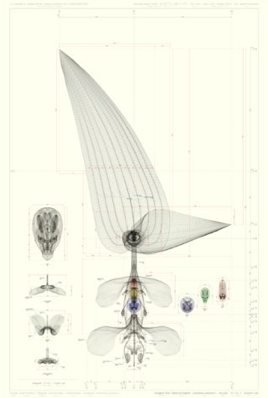Search This Blog
Saturday, January 7, 2012
Aerodyne, a compact hand-made Art Deco computer
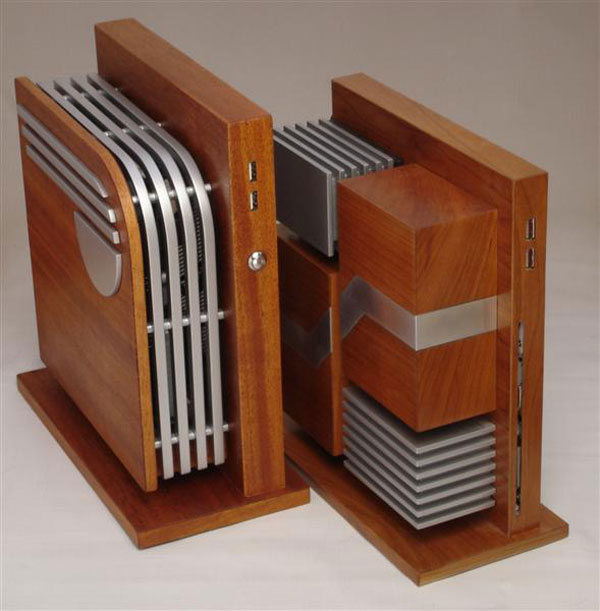
Aerodyne is Jeffrey Stephenson's latest hand-made Art Deco PC. In keeping with the (modern) times, it's a compact Mini-ITX affair in mahogany and aluminum, with an Intel i3 CPU, 8GB of RAM and a 256GB solid state drive. Stephenson plans to make no more than a handful of them, to order.
Untitled flower scan, Katinka Matson
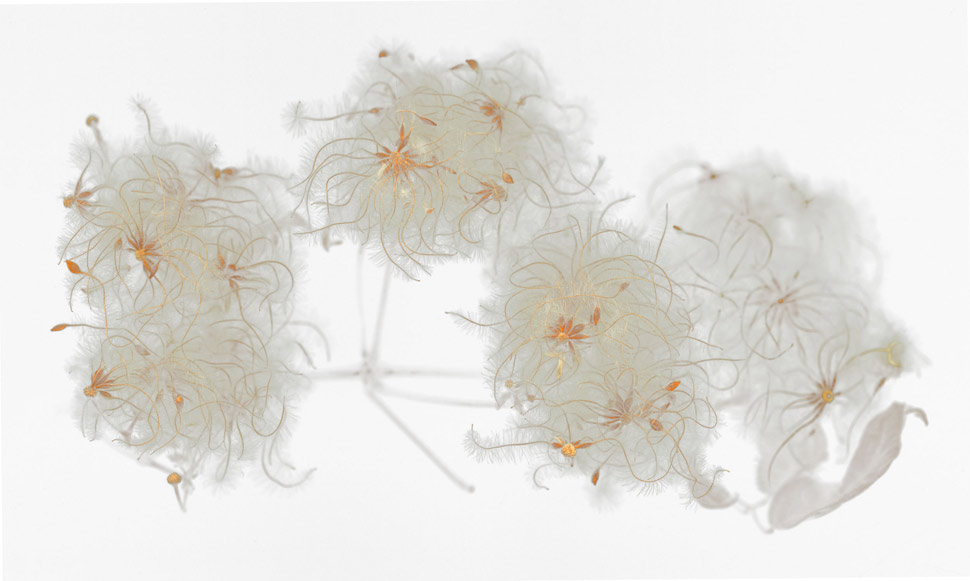
An untitled work by Katinka Matson, via John Brockman and EDGE.org. The artist's site is here, and you can view a larger-size image here (fun to gaze at on an iPad, I think).
Update: Boing Boing reader Jennifer Forman Orth, Ph.D., who is an Invasive Plant Ecologist, says, "That's actually a scan of the seedheads of a Clematis vine. So not a flower, not anymore - already pollinated and gone to fruit. But a small technicality for that beautiful image."
Macoto Murayama's incredible digital flower diagrams
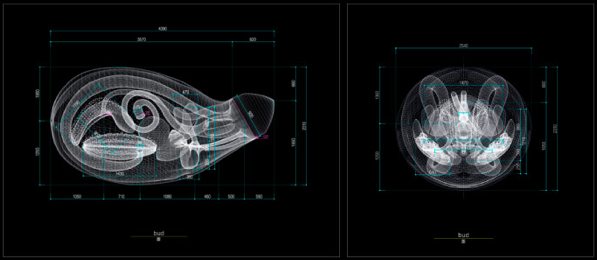
Macoto Murayama's exquisite "Inorganic Herbarium" diagrams will be on display at Frantic Gallery's booth in the Art Stage Singapore Art Fair next weekend, January 12-15. I first posted about his work back in 2009 and its evolution is nothing short of breathtaking.
This time we present exclusively large scale Botanical Diagrams by Murayama with a vast explanatory material on both botanical and technical context of his digital flowers. We will also show how the artist creates his works, beginning from vivisection of a real flower, photography, sketches and then software for 3-Dimensional drawings. For the first time, the original flowers used for the Botanical Diagrams will also be shown inside transparent vessels filled with formaldehyde.
Macoto Murayama: Botanical Diagrams
Nathan Richard Phelps's oil pen marvels
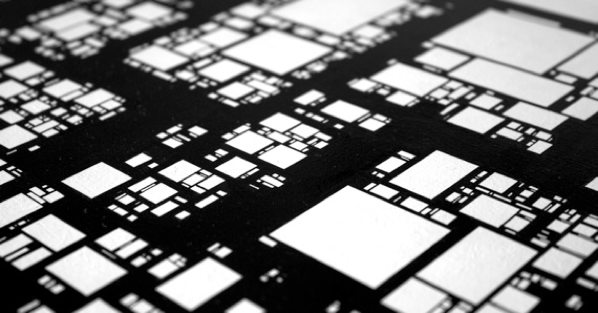
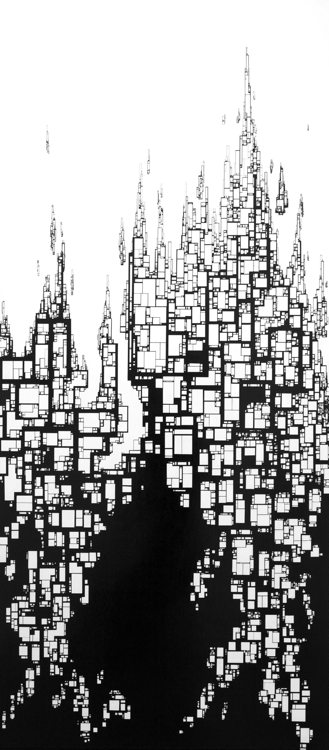
One evening this week, my wife and I were walking on Market Street in San Francisco when we were awestruck by the painting at left leaning in the window of the E6 Gallery. The artist, Nathan Richard Phelps, was inside hanging his work for a solo show opening this Friday. He must have noticed our stunned expressions because he opened the door to chat for a bit. A delightful guy, he explained that this huge (7 foot tall!) oil pen painting, titled "Tompkins Window," was commissioned by a couple living in a Manhattan apartment. Makes sense, as the piece has an architectural/city planning vibe to it but also evokes memories of early computer drawing programs that, as my wife said, might run on a 1980s Atari. Several of Phelps's paintings are in this angular style while others are all about organic curved forms in almost op art patterns. They are all marvelous.
Year-end mix 2011
 Well, you probably thought I was never coming back, eh?
Well, you probably thought I was never coming back, eh?
For awhile, I thought maybe I wouldn’t have the time to either, but then I told myself I’d set a hard limit on the amount of time I could spend working on a mix and end up finishing it in half that time. Working through the transitions in my head prior to sitting down at the computer helped a bit, and while it isn’t nearly as involved as the 2009 mix that I did, I feel pretty happy with how it turned out.
The artwork is at right, and you can download it by clicking on the artwork or this link right here.
Names of artists involved is on the artwork itself, but here’s the full tracklisting. It runs just over an hour, for those keeping track at home.
- 00:00 | Colin Stetson – “A Dream Of Water” (from New History of Warfare Vol. 2: Judges)
- 03:04 | Bill Callahan – “America!” (from Apocalypse)
- 08:28 | The Drums – “Days” (from Portamento)
- 12:53 | Panda Bear – “You Can Count On Me” (from Tomboy)
- 15:20 | Sandro Perri – “Love & Light” (from Impossible Spaces)
- 18:55 | Rustie – “Surph” (from Glass Swords)
- 22:55 | Battles – “Wall Street” (from Gloss Drop)
- 27:35 | Sepalcure – “Eternally Yrs” (from Sepalcure)
- 32:20 | The Weeknd – “Initiation” (from Echoes of Silence)
- 36:24 | Machinedrum – “U Don’t Survive” (from Room(s))
- 41:00 | Robag Wruhme – “Pnom Gobal” (from Thora Vukk)
- 46:15 | Andy Stott – “Posers” (from We Stay Together)
- 50:52 | Tim Hecker – “In The Fog III” (from Ravedeath, 1972)
- 54:52 | Leyland Kirby – “They Are All Dead, There Are No Skip At All” (from Eager to Tear Apart The Stars)
Now, I just need to get motivated to post some sort of year-end list in the next couple weeks. All of the artists featured above are on it (as well as some others). There’s a hint, I guess.
Fish mimics mimic octopus
This is a great find by Not Exactly Rocket Science's Ed Yong. A tourist and a couple of researchers from the California Academy of Sciences have documented an instance of Pacific-dwelling jawfish hiding from predators by blending into the stripes of well-known camouflage guru, the mimic octopus.
This relationship is probably a rare occurrence. The black-marble jawfish is found throughout the Pacific from Japan to Australia, while the mimic octopus only hangs around Indonesia and Malaysia. For most of its range, the jawfish has no octopuses to hide against. Instead, Ross and Rocha think that this particular fish is engaging in “opportunistic mimicry”, taking advantage of a rare chance to share in an octopus’s protection.
Thanks, Atvaark!
Hamster-powered sub
Two (unnamed?) Ocean Engineering students created a "hamster-powered submarine" from "materials derived from common household objects" that connected a hamster wheel in a sealed, air-supplied vessel to a propeller, allowing hamsters to take themselves on aquatic jaunts. They documented the build in some detail, and supplied a video of the maiden voyage. One of the design requirements was "the life and well being of the hamster must not be compromised in any way."
HOWTO make a custom snowglobe of your house

A clever fellow called Qarl figured out how to make a custom snowglobe of his family's house as a surprise gift for his wife. He auto-modelled it in Google Sketchup, cleaned it up some, added a snowy hill, sent the model to a 3D printing company, and popped it in a snowglobe kit. Voila!
1) order a custom snowglobe kit. ebay has a bunch to choose from. try to find one that tells you its exact dimensions so you can size your model before the globe arrives in the mail.
2) take pictures of your house. you probably want at least eight circling the perimeter. more can’t hurt.
i also grabbed a top-down view of my house from google’s satellite maps. it’s very low-res, but the house is going to be tiny, so it works out.
3) build a cg model of your house.
i tried a handful of the “automatic” systems to build models. microsoft’s photosynth, autodesk’s 123D catch, a couple lesser known programs. none of them worked well enough to produce a final model - they did well for 75% of the model, but then horribly mutilated the last 25%.
in the end i went with google’s sketchup - its photo match tools are great for building models from photos of buildings.
3D printing in ice
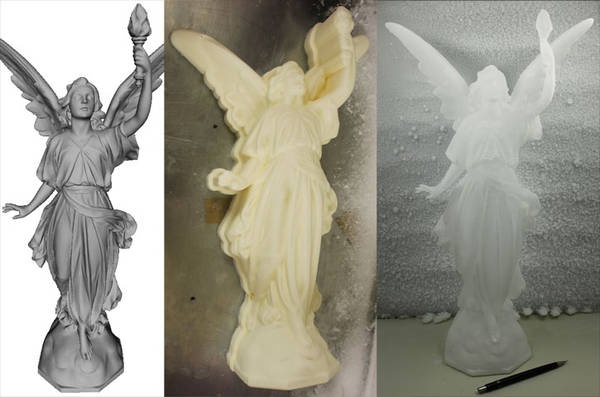
Katharine Gammon writes in Wired about the work of McGill University researcher Pieter Sijpkes and colleagues, who have produced an experimental 3D printer that produces ice-sculptures. The researchers give current applications as a cheap alternative to printing in plastic goop (thanks to patents that will soon expire, the plastic powder used in high-end 3D printers costs more than filet mignon) and for "ice tourism."
He and his team have printed a statue, an egg carton, a martini glass, and molds that melt conveniently away. Why ice? Well, it’s cheap and readily available, and low-cost ice models could help inventors design products more quickly. The challenge of printing with ice, besides the very cold temps necessary for the process, was building a machine that’s up to the task. Here’s how Sijpkes did it.
Friday, January 6, 2012
Dazzle makeup and hairstyles to confuse facial recognition algorithms
Sent to you via Google Reader
Dazzle makeup and hairstyles to confuse facial recognition algorithms
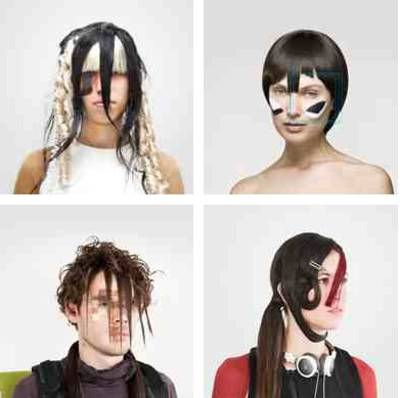
CV Dazzle is a systematic approach to creating "dazzle" makeup and hair effects that fool computer vision systems. For example, you could change the symmetry of your face by painting a lightning bolt across it, causing all computer vision systems to mistakenly identify you as David Bowie.
There is a strong emphasis towards radical-neutrality. The designs used in the first several looks are inspired by both tribal paint and high-fashion aeshetics from the club scene in London. In fact, photos from both were incorporated into the testing algorithms. Surprisingly, many of the more eccentric looks did not fool the face detection algorithms.
To design the looks at left, software was developed that combines interactive drawing and genetic algorithms to detect vulnerabilities in the face detection process. By understanding how face-detection algorithms work, an anti-face can be constructed and used as a guide for creating makeup and hair-styling that foils the face detection process. As a result, your face becomes undetectable to machines yet retains some level of legibility to humans.

